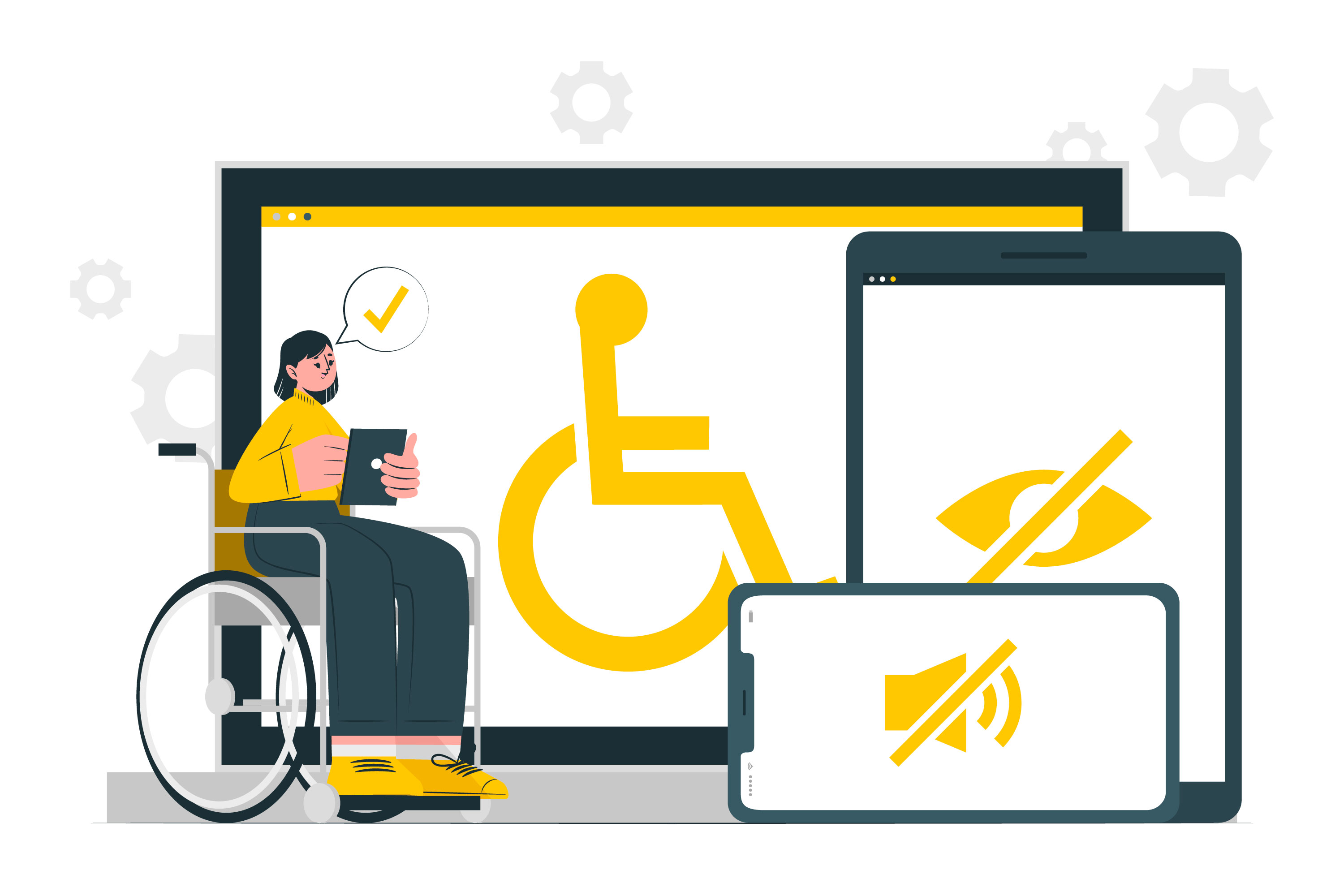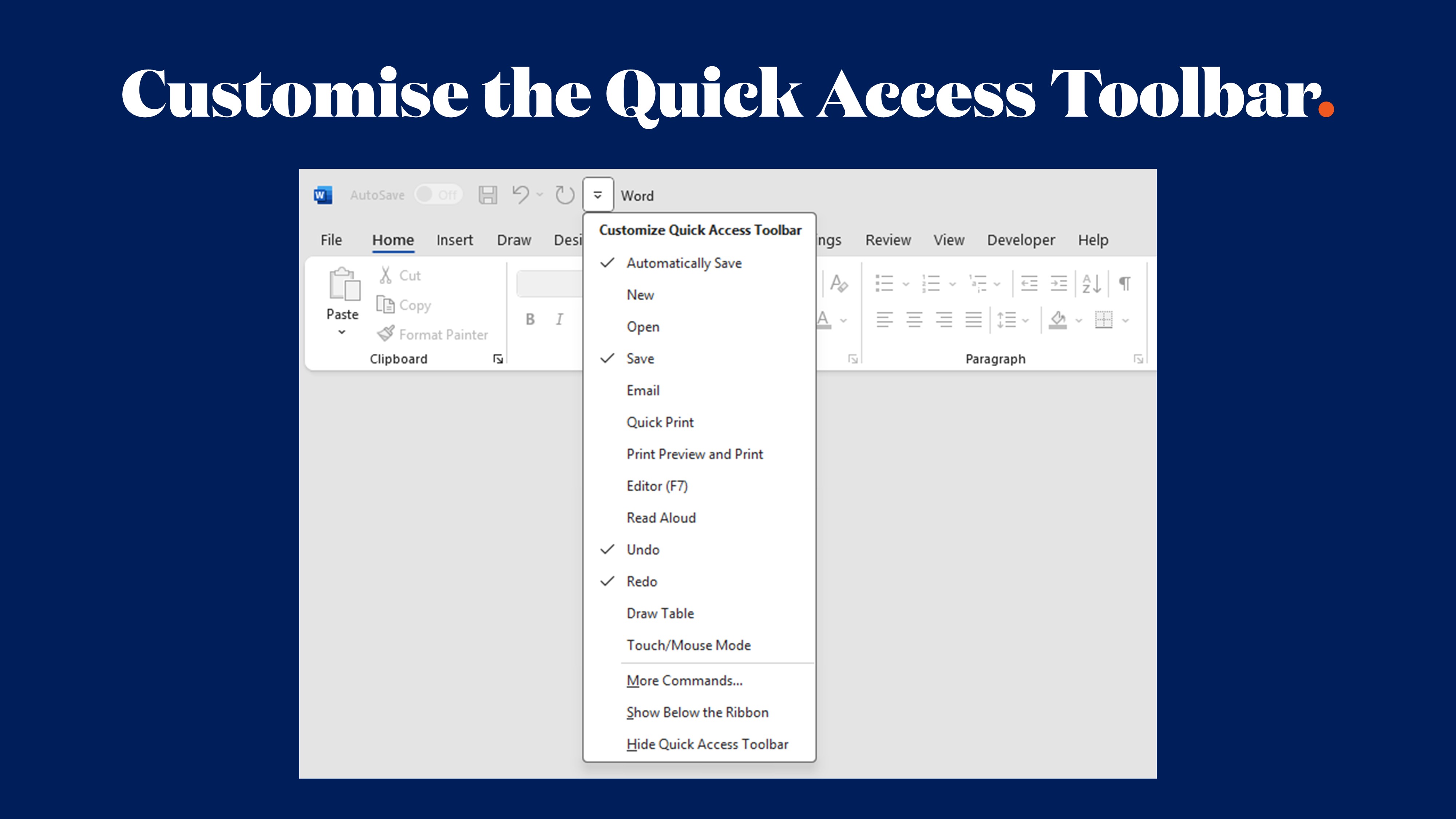Accessible by Design: Creating Inclusive Microsoft Office Templates for All Audiences

Ensuring your documents, presentations, and spreadsheets can be accessed by everyone isn't just nice to have—it's essential. Yet accessibility often remains an afterthought, tacked on at the end of a project rather than built into its foundation.
As someone who's spent years elbow-deep in PowerPoint animations and Excel formulas (yes, I dream in cells and slides), I've seen firsthand how thoughtfully designed Microsoft Office templates can break down barriers for people with disabilities while making life easier for everyone else too. Let's dive into why accessible design matters and how you can create Microsoft Office templates that work for all your audiences.
Why Accessibility Should Be at the Heart of Your Template Design
Before we get to the 'how', let's talk about the 'why'. Accessible design isn't just about compliance or ticking boxes—it's about creating content that everyone can use effectively, regardless of ability.
The Business Case for Accessible Templates
When your templates aren't accessible, you're essentially hanging a "some people not welcome" sign on your digital door. Consider these compelling reasons to prioritise accessibility:
- Reach a wider audience: About 15% of the world's population lives with some form of disability. That's over a billion potential customers, employees, or stakeholders.
- Legal compliance: Many countries have regulations requiring digital accessibility, including Australia's Disability Discrimination Act.
- Better user experience for everyone: Ever tried to read a presentation on your mobile with tiny font? Accessibility features benefit all users, not just those with disabilities.
- Improved SEO: Many accessibility practices (like adding alternative text) also boost your content's search engine visibility.
As we like to tell our clients, "When you design for accessibility, you're not designing for 'them'—you're designing for your future self." After all, most of us will experience temporary or permanent disability at some point in our lives.
Key Principles for Creating Accessible Microsoft Office Templates
Let's get practical. Here are the essential elements to consider when designing accessible templates across Word, PowerPoint, and Excel.
1. Structure is Your Foundation
Think of your document's structure as its skeleton—if it's not strong, nothing else matters much.
In Word:
- Use built-in heading styles (Heading 1, Heading 2, etc.) rather than just making text bigger or bold
- Create a logical reading order with a proper document outline
- Use the Navigation pane to check your heading hierarchy
In PowerPoint:
- Use slide layouts consistently
- Ensure content placeholders are used (not just text boxes)
- Set a logical tab order for screen readers
In Excel:
- Use table headers consistently
- Name your worksheets descriptively
- Avoid merged cells where possible (they're notoriously troublesome for screen readers)
2. Colour and Contrast: More Than Just Aesthetics
"But it looks so pretty!" isn't a defence when someone can't read your content because of low contrast. About 300 million people worldwide have colour vision deficiency—that's a lot of people potentially struggling with your content.
Best Practices:
- Maintain a contrast ratio of at least 4.5:1 for normal text and 3:1 for large text
- Never use colour alone to convey meaning
- Test your colour schemes with tools like the Colour Contrast Analyzer
- Include patterns or textures in charts alongside colours
We once worked with a financial services client whose brand colours were light grey and yellow—a nightmare for accessibility! We developed an "accessible version" of their brand guidelines specifically for digital content that maintained their identity while ensuring readability.
3. Alternative Text: Painting Pictures with Words
Alt text is the invisible description that makes visual content accessible to people using screen readers. It's also incredibly useful when images don't load or when content is being translated.
Guidelines for Effective Alt Text:
- Be concise but descriptive
- Focus on the purpose and function of the image
- Don't start with "Image of..." (screen readers already identify it as an image)
- For decorative images, mark them as such rather than leaving alt text blank
In PowerPoint and Word, right-click an image and select "Edit Alt Text." In Excel, right-click and choose "Format Picture" then "Alt Text."
4. Fonts and Text: Legibility Is Non-Negotiable
Your beautiful script font might look elegant, but if no one can read it, what's the point?
Text Accessibility Tips:
- Use sans-serif fonts like Arial, Calibri, or Verdana
- Keep font size at minimum 12pt for documents, 24pt for presentations
- Avoid all caps, excessive italics, or underlining
- Maintain adequate spacing between lines and paragraphs
- Left-align text rather than justifying (justified text creates uneven spacing)
5. Hyperlinks: Make Them Meaningful
"Click here" or "read more" links are the accessibility equivalent of vague directions—they don't tell users where they're going.
Better Linking Practices:
- Use descriptive link text that makes sense out of context
- Avoid generic phrases like "click here" or "more information"
- For URLs, use meaningful text rather than displaying the full web address
- Ensure links are easily distinguishable (not just by colour)
Case Study: Transforming a Corporate Reporting Template
One of our clients, a mid-sized accounting firm, came to us with a beautiful annual report template that was, unfortunately, an accessibility nightmare. It featured:
- Light grey text on a white background
- Important information conveyed only through colour coding
- Complex infographics with no alternative descriptions
- Decorative fonts at 10pt size
- Content placed in text boxes rather than using proper slide layouts
Our transformation process included:
- Restructuring the template using proper master slides and content placeholders
- Revising the colour palette to maintain brand identity while ensuring adequate contrast
- Creating alternative visualisations for complex charts
- Developing clear guidelines for content creators
- Building in accessibility checks as part of the template
The result? A template that was not only more accessible but also easier for their team to use consistently. Their marketing director later told me they received positive feedback from several stakeholders with disabilities who had previously struggled with their reports.
Making Accessibility Part of Your Template Design Process
Creating accessible templates isn't a one-time project—it's an ongoing commitment. Here's how to make it part of your workflow:
1. Start with Accessibility in Mind
Don't wait until the end to "add accessibility." Build templates with accessibility as a core requirement from day one.
2. Use Built-in Accessibility Checkers
Microsoft Office includes accessibility checkers in Word, PowerPoint, and Excel. Use them! Go to File > Info > Check for Issues > Check Accessibility.
3. Test with Actual Assistive Technologies
Try navigating your template using only keyboard controls or a screen reader like NVDA (free) or JAWS. It's an eye-opening experience that will improve your design approach.
4. Create Clear Guidelines for Template Users
The most accessible template in the world can still be used poorly. Create guidelines to help your team maintain accessibility when they use your templates.
5. Stay Updated on Best Practices
Accessibility standards evolve. Follow resources like the Web Content Accessibility Guidelines (WCAG) to stay current.
Conclusion: Accessible Templates Benefit Everyone
Creating accessible Microsoft Office templates isn't just about compliance or being nice—it's about effective communication. When you design with accessibility in mind, you're creating content that works better for everyone, including people in noisy environments, those using mobile devices, international audiences, and yes, people with disabilities.
At Ideaseed, we believe accessibility should be baked into every template we create, not sprinkled on top as an afterthought. Our approach to accessible design has helped our clients communicate more effectively with all their audiences while meeting their legal and ethical obligations.
Ready to make your Microsoft Office templates more accessible? We specialise in creating beautiful, functional, and accessible templates for Word, PowerPoint, and Excel that meet your brand requirements while ensuring everyone can access your content. Get in touch today to learn how we can help your organisation communicate more inclusively.
FAQs
1. Is making templates accessible expensive or time-consuming?
When accessibility is built in from the start, it adds minimal time to the design process. Retrofitting accessibility later is what becomes expensive and time-consuming.
2. Do accessible templates look boring or less professional?
Not at all! Accessible design is about smart design choices, not limiting creativity. Many accessibility best practices (like clear hierarchy and good contrast) actually improve the visual appeal of templates.
3. We have brand guidelines with colours that don't meet contrast requirements. What should we do?
Work with your design team to develop "digital accessibility versions" of your brand colours that maintain your identity while meeting contrast requirements. Many brands now have specific accessibility guidelines as part of their style guides.
4. How can we check if our existing templates are accessible?
Start with Microsoft's built-in accessibility checker, then test with keyboard navigation and screen readers. Consider an accessibility audit if you have many templates.
5. Are there legal requirements for making our documents accessible?
Yes, in many countries. In Australia, the Disability Discrimination Act applies to information and services, including digital content. For organisations working with government or in regulated industries, accessibility requirements are often explicitly stated in contracts and regulations.
who we work with





.svg)
.svg)
.svg)
.svg)







%20(2).avif)



.svg)



















.svg)




















.svg)
.svg)
.svg)
.svg)







%20(2).avif)
The ideaseed difference
We’re fast. Really fast
We know time is of the essence, so we pride ourselves on quick, efficient delivery without sacrificing quality. Whether you have a tight deadline or need a last-minute update, our team is committed to delivering polished results within even the tightest timeframe.
We’re reliable. Always
Our clients trust us because we consistently deliver beautiful, high-quality work. We understand the importance of dependable tools in your business, and we never compromise on quality or functionality.
We go the extra mile
We don’t just meet expectations; we exceed them. We take the time to understand your needs and find creative, tailored solutions that make your work easier and more effective. Our commitment to going above and beyond means you get more than just a template — you get a partner who genuinely cares about your success.

